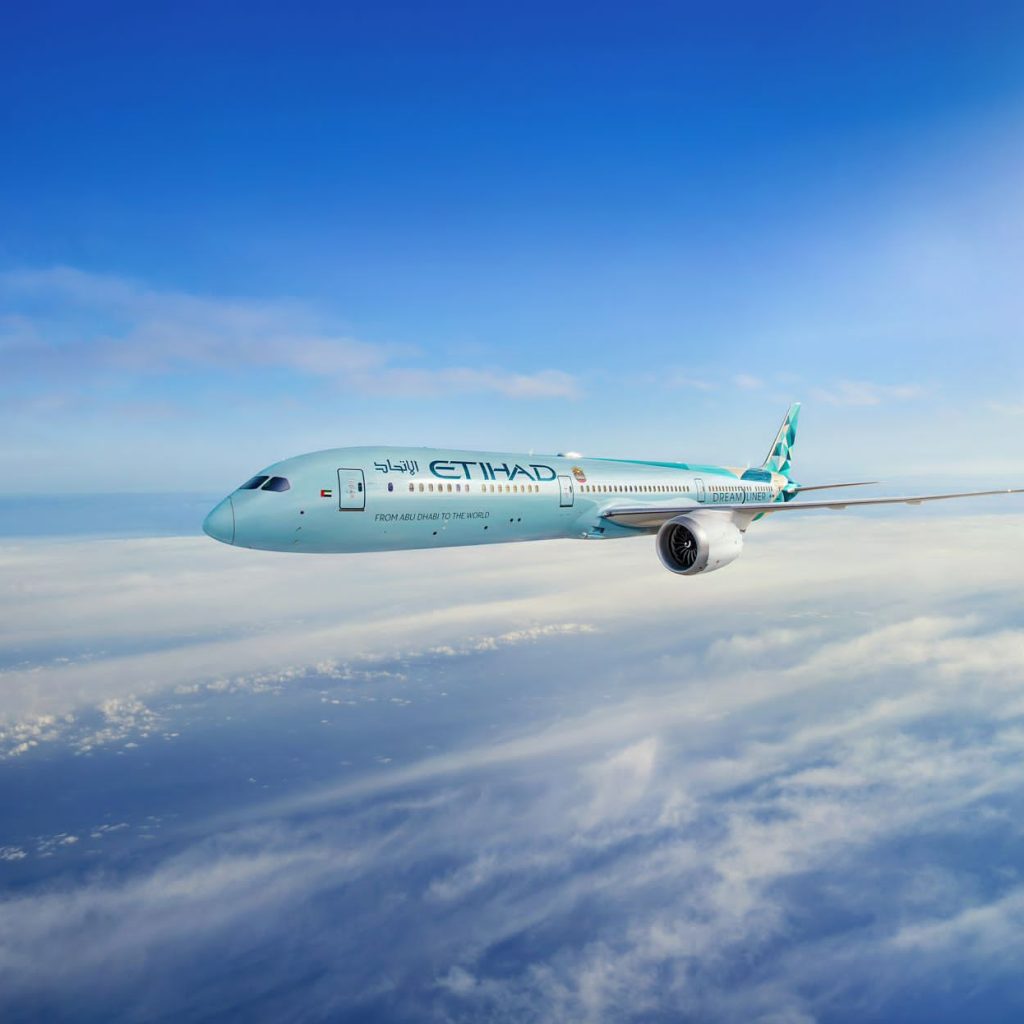Etihad Airways partners with Satavia to apply condensation path prevention technology to a transatlantic flight for the first time

Etihad Airways, the national airline of the United Arab Emirates, is applying condensation technology to a net-zero carbon flight during COP27 as part of its ongoing partnership with SATAVIA.
The airline is scheduled to operate a special zero-carbon flight EY130 from Washington Dulles International Airport to Abu Dhabi on Sunday, December 13, combining Satavia technology to prevent condensation paths and sustainable aviation fuel, along with other operational efficiencies, to ensure that net zero emissions can be achieved. Zero in commercial flights by applying current technologies.
The flight is the latest in Etihad's eco-flight program that has operated over the past two years, and follows the sustainable EY20 flight operated from London Heathrow to Abu Dhabi last year, which reduced carbon dioxide emissions by 72 percent.
Building on Etihad Airways' weekly runway avoidance exercises with Satavia, this flight will be Etihad Airways' first transatlantic flight to manage the zero-carbon footprint of runways and address the challenge of sustainability, which is responsible for around 60 percent of aviation's climate footprint.
On this occasion, Mariam Al Qubaisi, Etihad Airways' Head of Sustainability and Excellence, said: “The collaboration between Etihad Airways and Satavia demonstrates that significant progress can be made in terms of sustainability in day-to-day business operations. During 2022, Satavia technology has allowed us to reduce our carbon footprint to more than 6500 tons of CO27 emissions. We are pleased to extend our partnership on this transatlantic flight at COPXNUMX, to address the carbon-neutral impacts of aviation using ground-breaking innovative technologies.”
Aircraft-generated condensation pathways increase the Earth's surface temperature by two-thirds of the climate impact of aviation, vastly outpacing direct carbon emissions from aircraft engines. Often associated with transatlantic flights, such as Washington's flight to Abu Dhabi, there is a high density of air traffic along with other weather conditions that may contribute to climate change without carbon emissions. During winter, cold and wet conditions often exacerbate condensation pathways.
In addition To prevent paths of condensation in daily flight operations, Satavia is conducting studies on the climate impacts of switching to carbon credits, with the launch of the first global auction trading in association with the AirCarbon Exchange in December 2022.
Commenting on the topic, Dr. Adam Durant, CEO of Satavia, said: “The DECISIONX:NETZERO platform supports smarter, greener aviation. By making minimal changes to a small percentage of flights, environmentally conscious operators such as Etihad Airways can eliminate a larger percentage of their carbon footprint with no significant impact on day-to-day operations and in a shorter period of time than required by other aviation environmental initiatives. For transatlantic flights, up to 80 percent of the impact of precipitation pathways on climate could be avoided by rerouting 10 percent of flights.”
The Greenliner flight will combine condensation path prevention technology with Book & Claim's "fuel capture and use" technology in partnership with World Energy, by injecting sustainable aviation fuel into the fuel grid at LAX for use by other airlines. The additional cost will be covered via alternative channels such as the Corporate Insightful Choices program and future Satavia carbon credit trading.
Al Qubaisi said, “The aviation sector cannot achieve climate neutral operations without managing carbon footprints. We look forward to our continued collaboration with Satavia, expanding the range of possible solutions and accelerating progress towards a climate-neutral aviation sector.
* The trip is described as a “zero carbon trip” rather than “carbon neutral” because it more than offsets COXNUMX emissions. For such a flight to be classified as a net zero carbon flight, Etihad Airways must demonstrate the absolute maximum possible direct emissions reductions. This includes (but is not limited to):
Benefit from a fleet of Boeing 787 Greenliners – with competitive fuel efficiency per passenger
Optimizing passenger and cargo load factors to maintain efficiency
Use one engine while walking on the stands
Engine washing and pre-flight cleaning of aircraft in order to ensure aerodynamic and engine efficiency
Extensive planning of direct flights and routes, including continuous landing and reduction of auxiliary power unit burnout
Test avoiding condensation pathways with Satavia to reduce carbon emissions and the climate impact of the aviation industry
Modifying on-board hospitality services to reduce waste and carbon footprint






